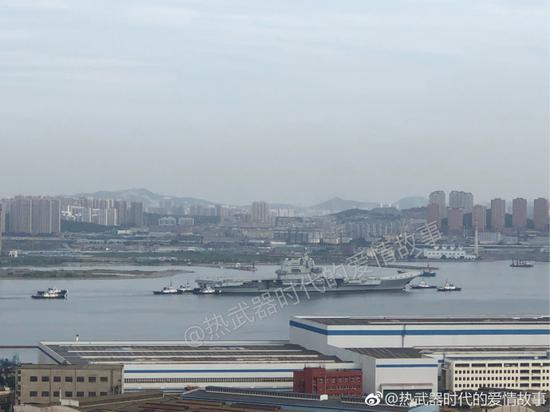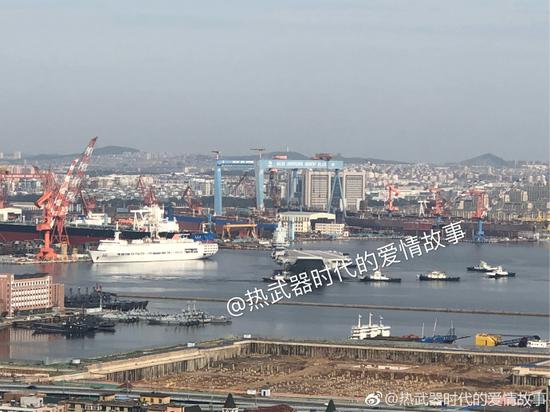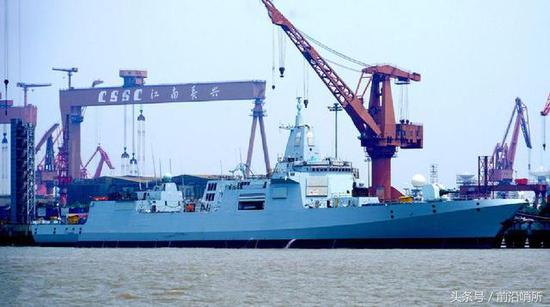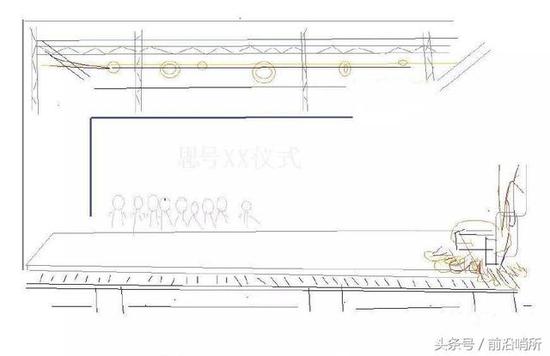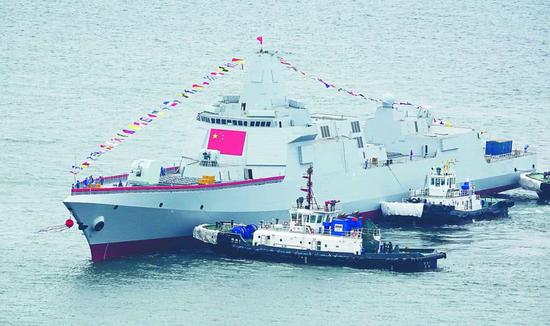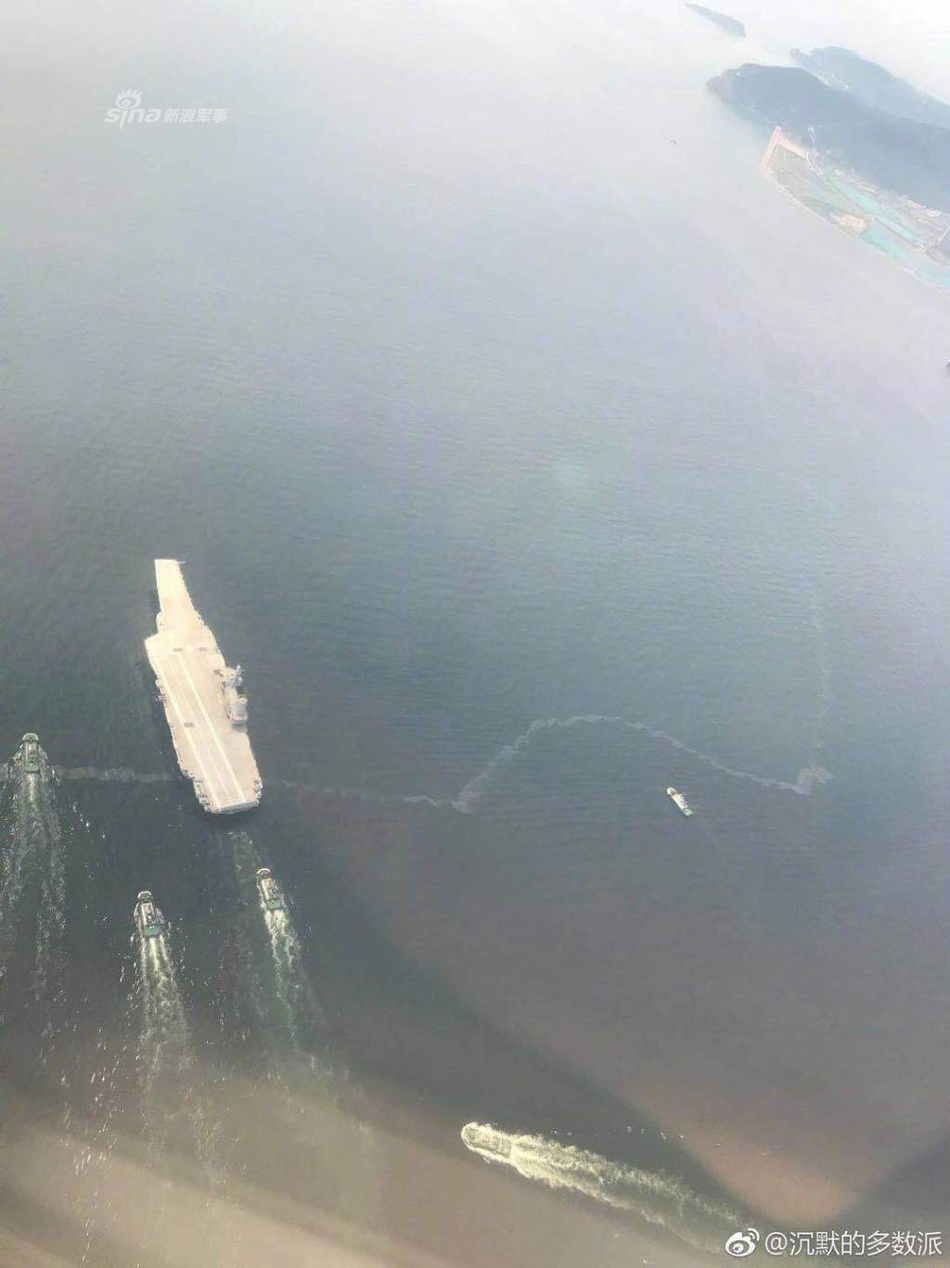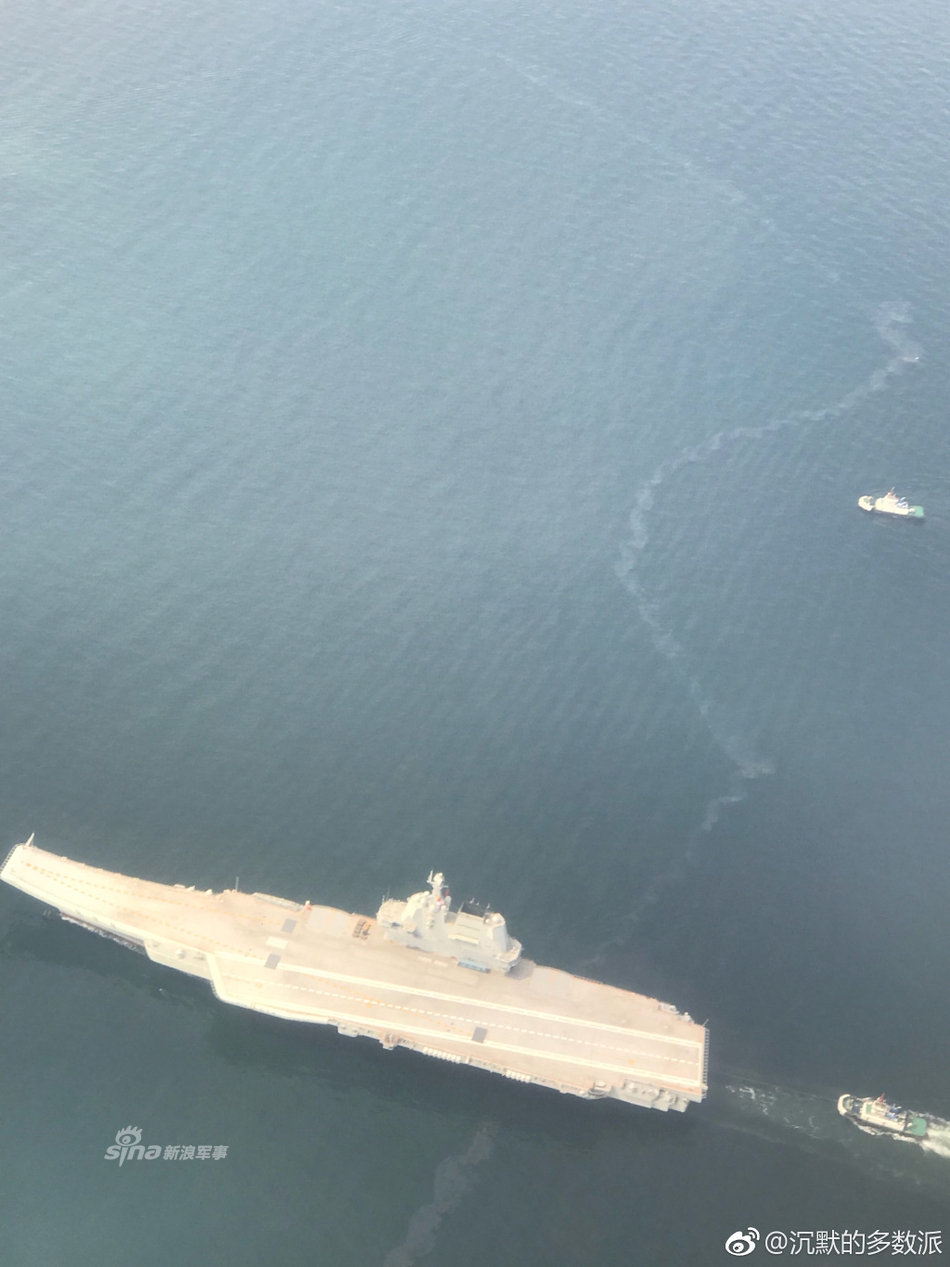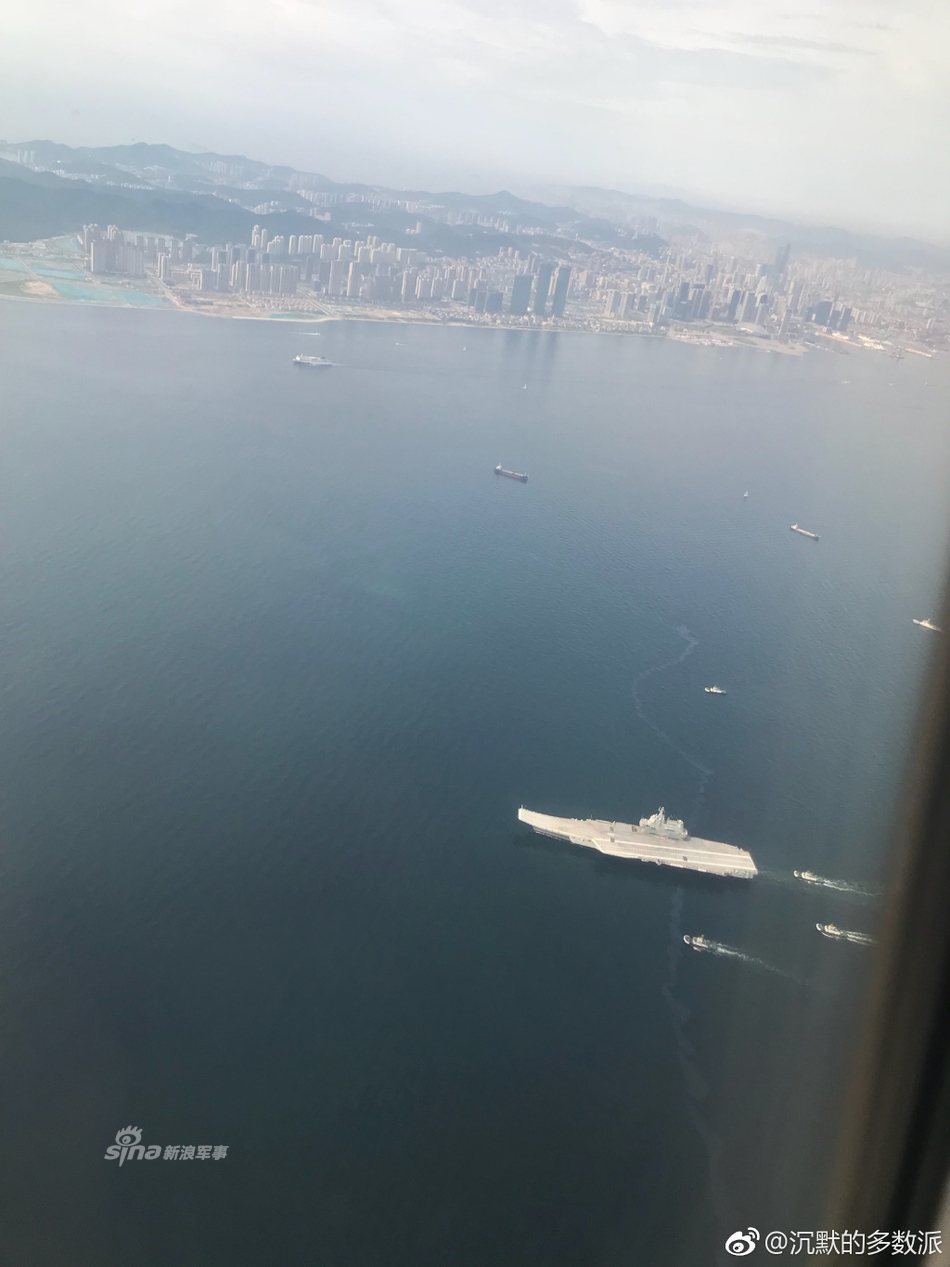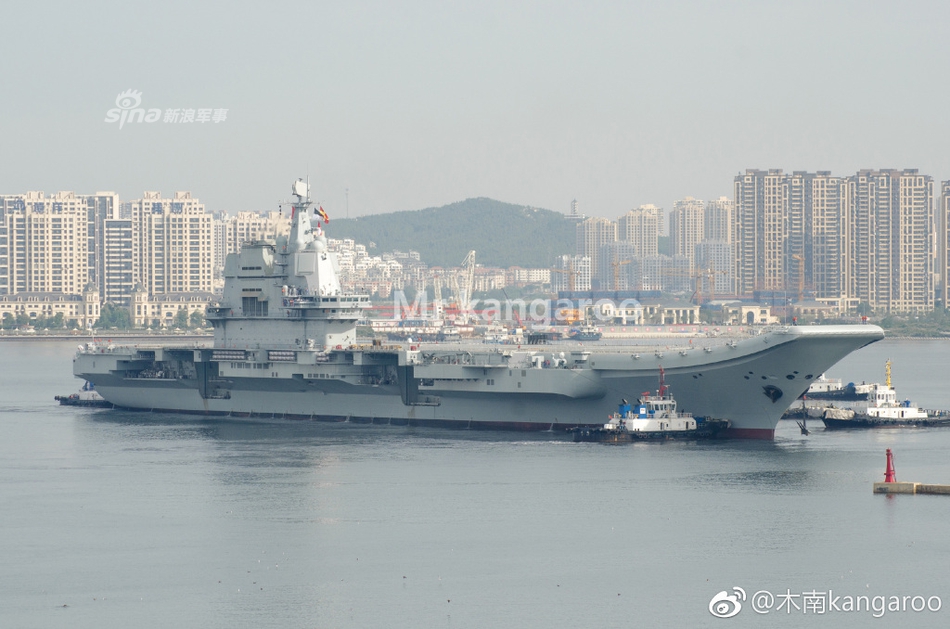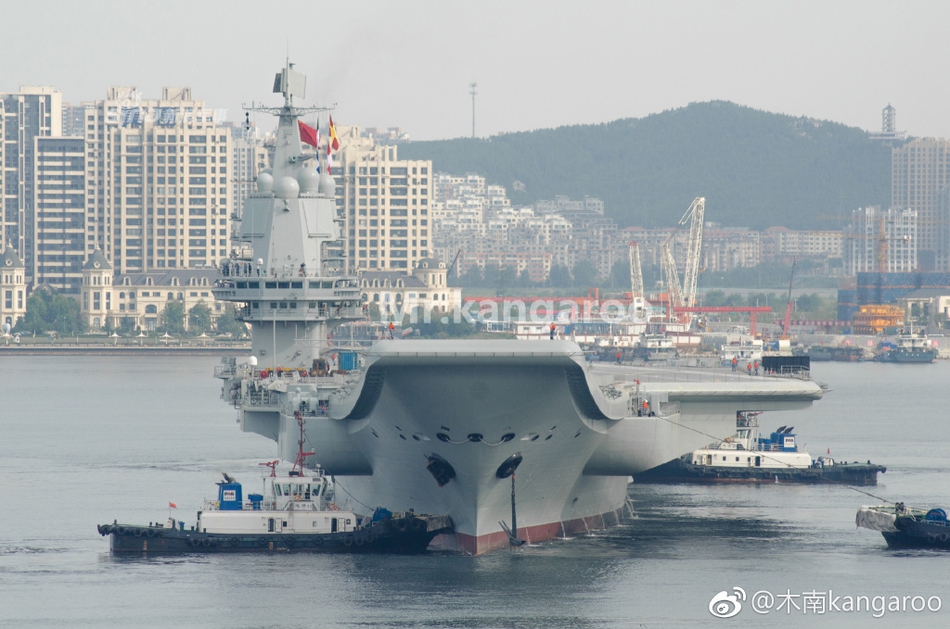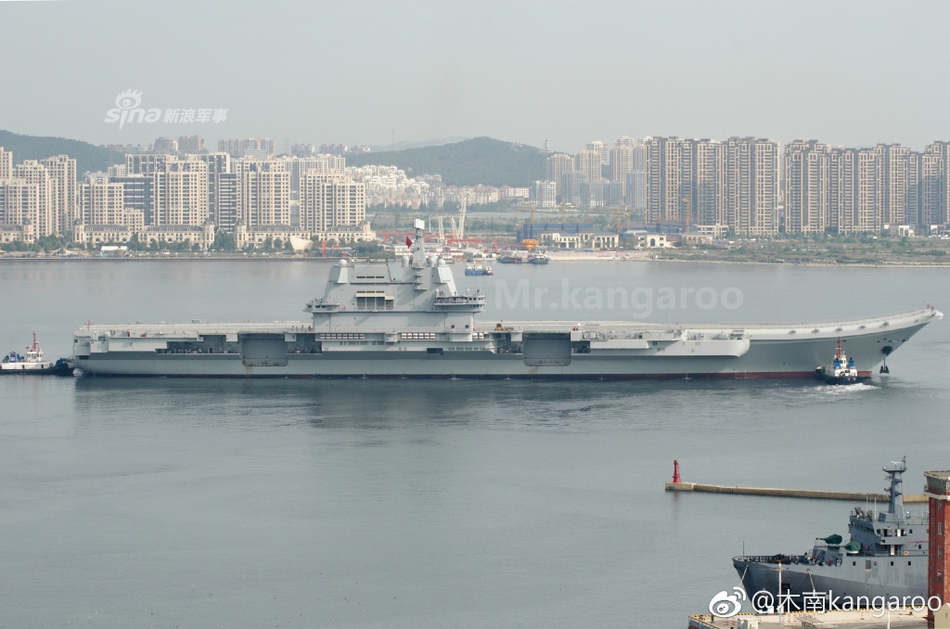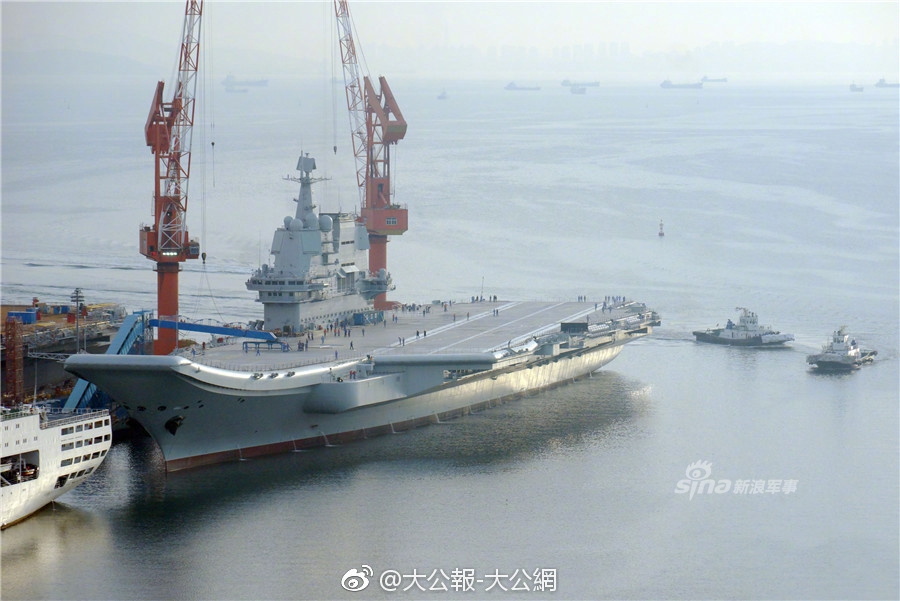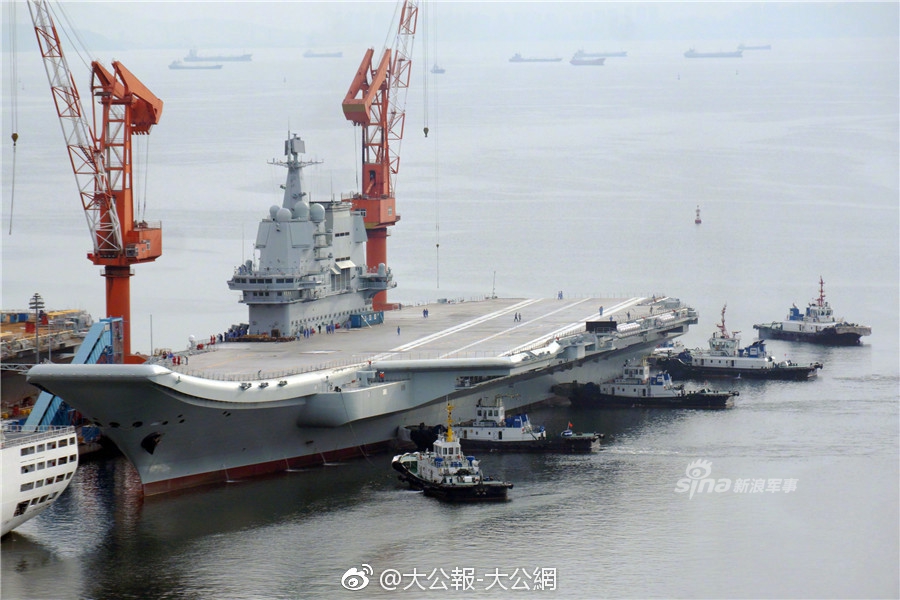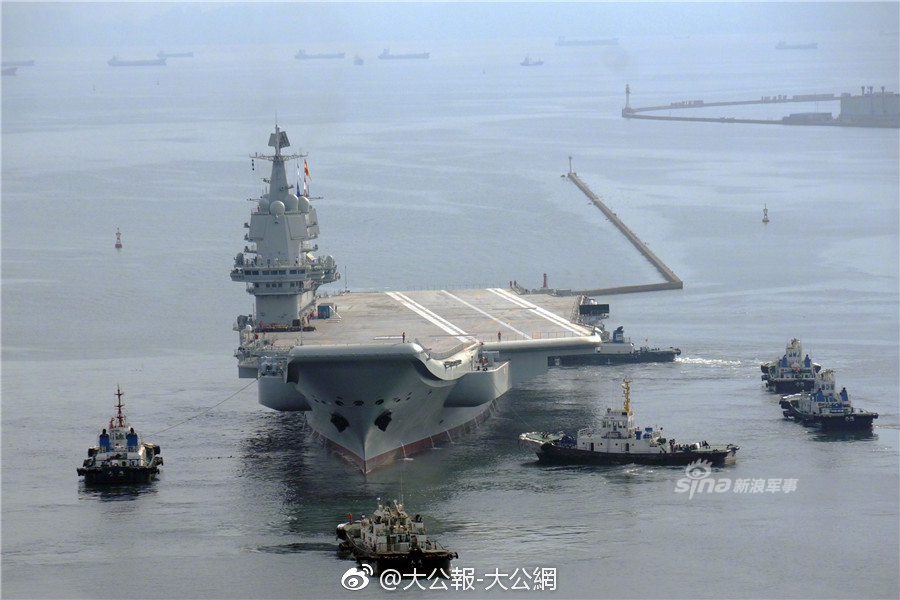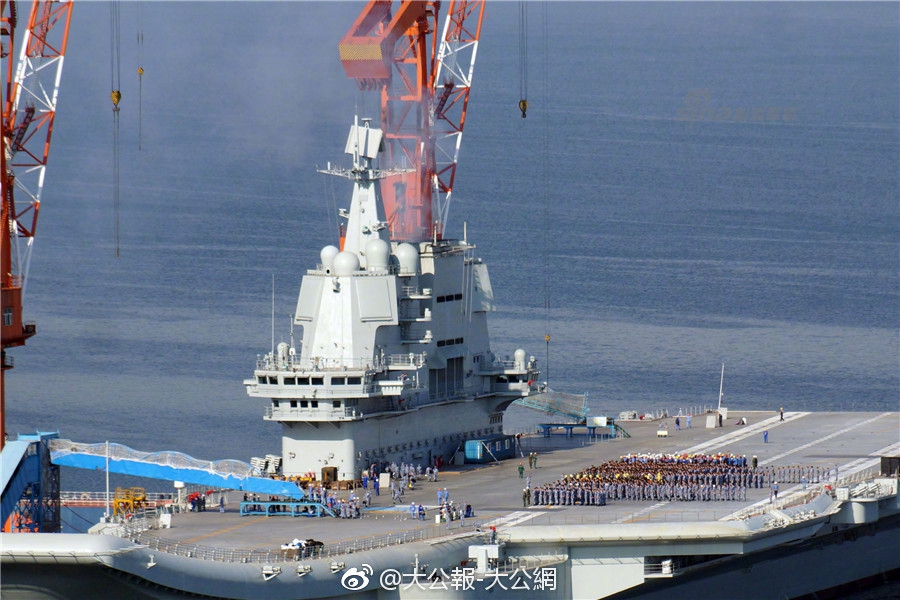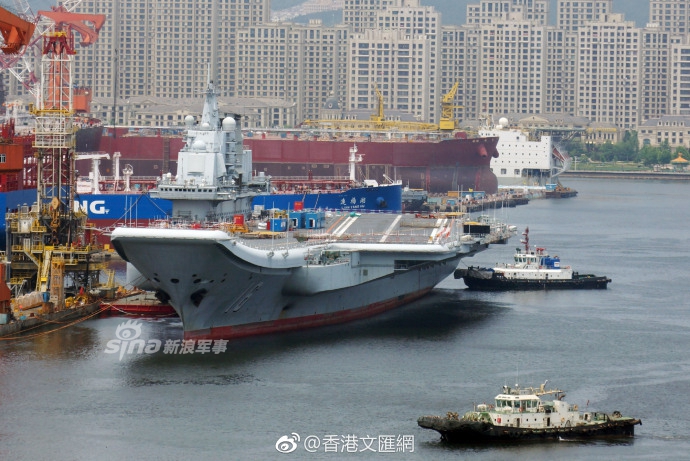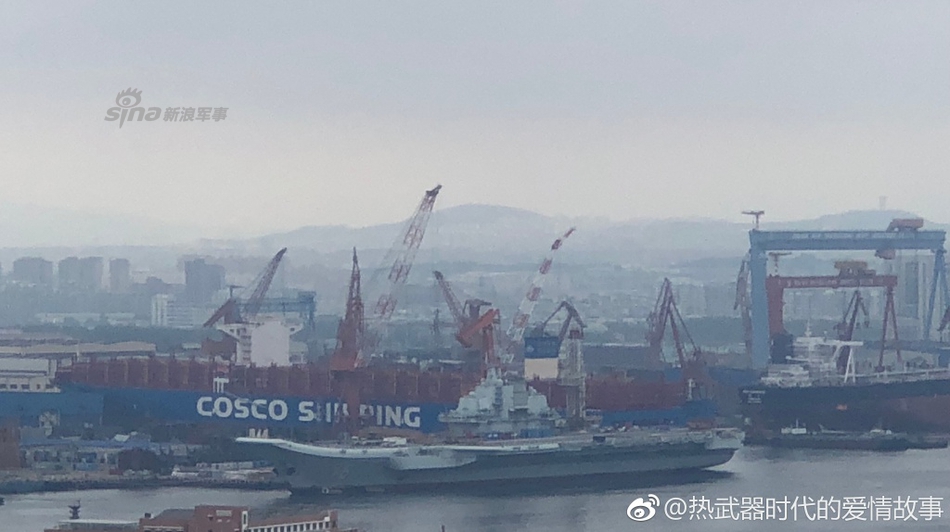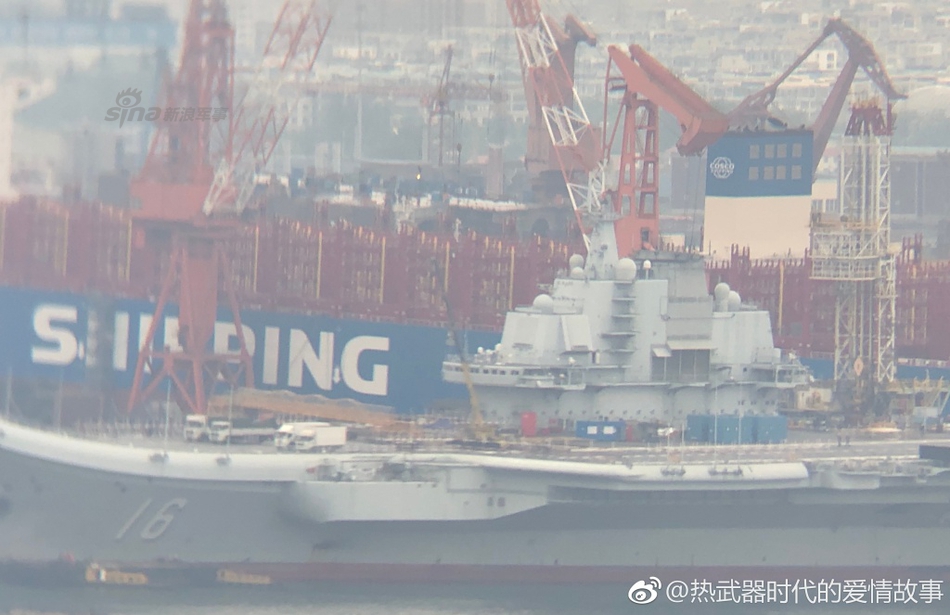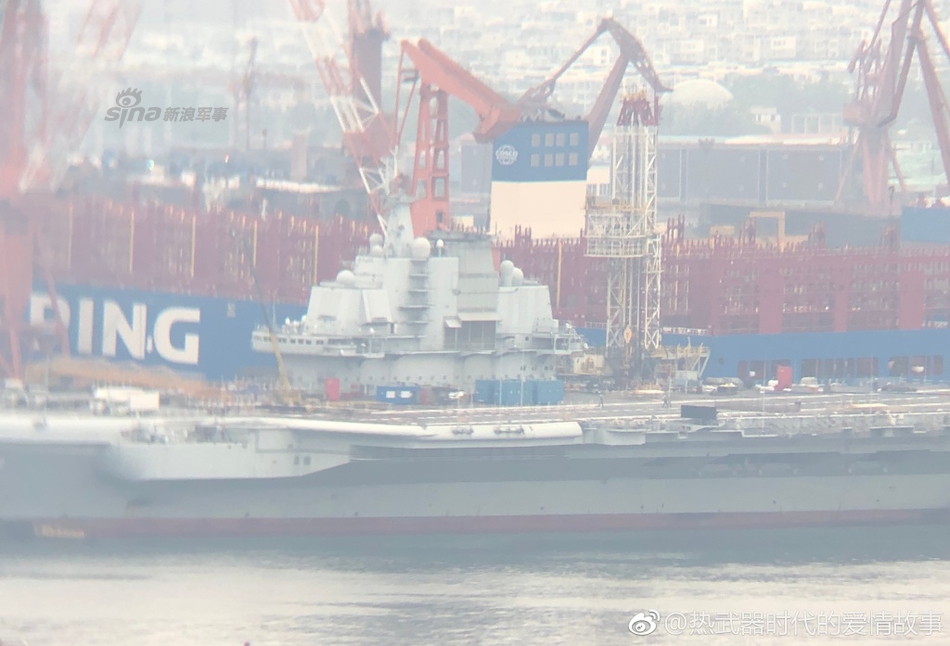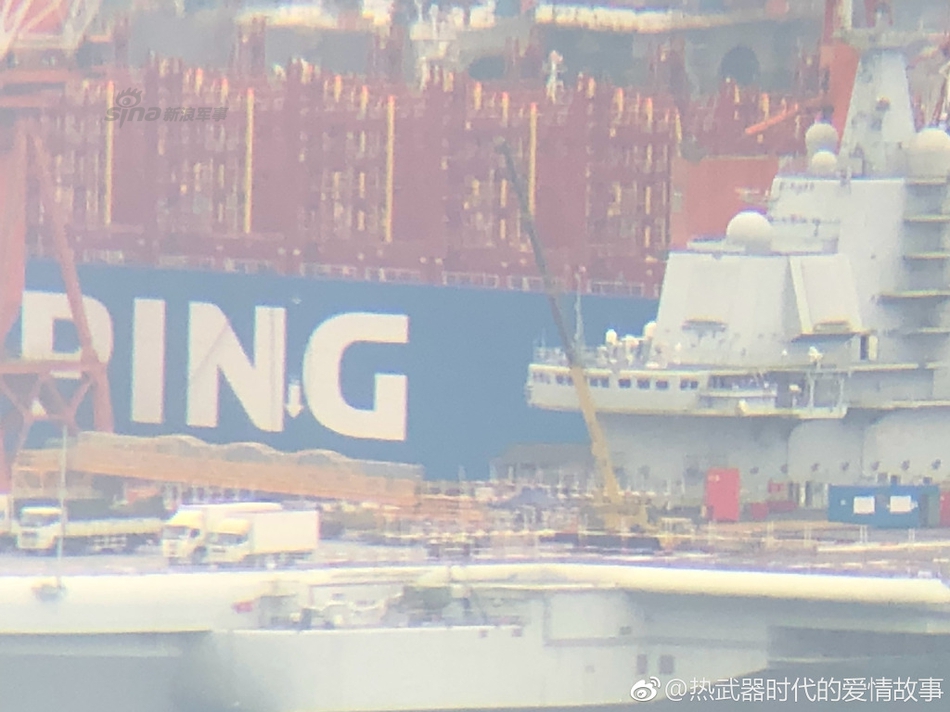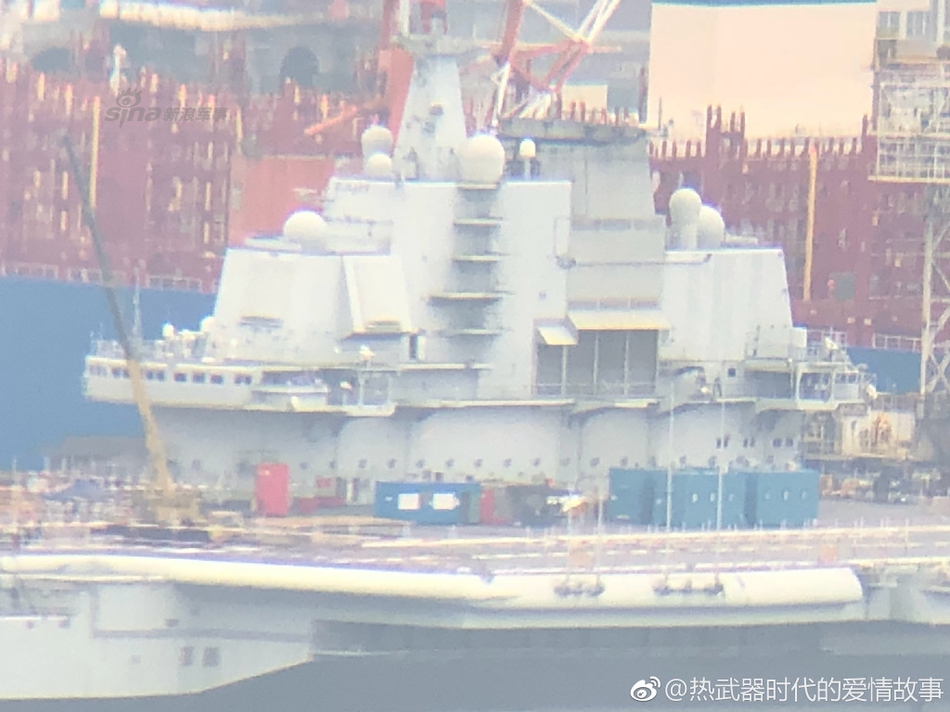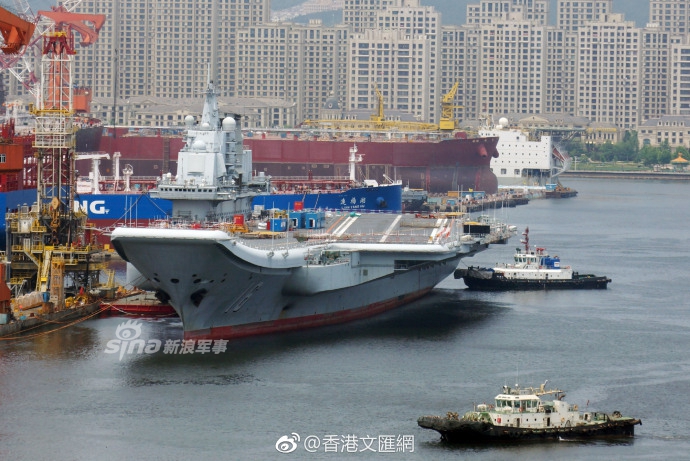- Joined
- Nov 29, 2016
- Messages
- 5,674
- Points
- 63
http://mil.news.sina.com.cn/jssd/2018-08-25/doc-ihicsiaw8399087.shtml
The largest optical lens made in China can make the reconnaissance satellite resolution super-keyhole
Sina Military at 09:59 on August 25, 2018
0
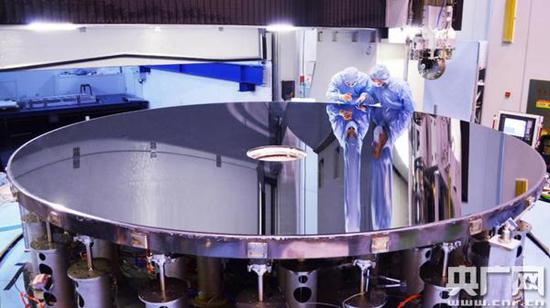 China makes the largest optical lens available today
China makes the largest optical lens available today
On August 21, Changchun Institute of Optics and Fine Mechanics completed a high-precision silicon carbide aspheric mirror with a diameter of 4 meters. It is the largest single-crystal silicon carbide mirror in the world. It marks that the advanced manufacturing capability of China's optical system has reached the international advanced level.
Many people may not understand the meaning of this mirror. The author gives an example. The most advanced optical reconnaissance satellite in the United States, KH-12, claims to have a resolution of 0.1 meters. Its lens is about 3 meters, which means the diameter of domestic optical lenses. It has surpassed the KH-12 reconnaissance satellite, thus laying a solid foundation for the domestic optical reconnaissance satellite to resolve strings beyond KH-12.
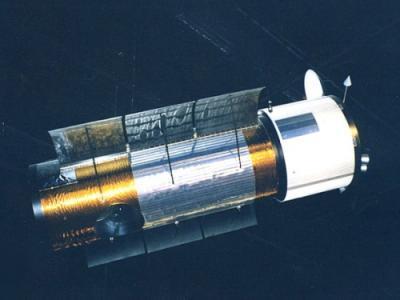 The most advanced KH-12 reconnaissance satellite optical lens in the United States is only 3 meters in diameter.
The most advanced KH-12 reconnaissance satellite optical lens in the United States is only 3 meters in diameter.
As we all know, the optical resolution follows the Rayleigh theorem, which is proportional to the wavelength and inversely proportional to the diameter of the lens, that is, the shorter the wavelength, the higher the resolution, the larger the diameter of the corresponding lens, and the higher the resolution, for the optical reconnaissance satellite. In fact, they all work in the visible light range, so the wavelength is similar, so the resolution is the lens diameter. As mentioned above, the KH-12 has become the highest resolution optical reconnaissance satellite, with the lens up to 3 meters in diameter.
The larger the diameter of the optical lens, the higher the quality and the more difficult it is to manufacture. This is because the tiny protrusions or cracks on the mirror will affect the light transmission performance of the lens, which will reduce the satellite resolution. From now on, the large diameter optical lens Only a few manufacturers can master it, and it is basically monopolized by developed countries. This field is also strictly embargoed on the domestic market. It was affected by the domestic economic and technological level in the early stage. The manufacturing level of domestic optical lenses was limited, and the diameter of optical lenses failed to exceed 1 meter. In terms of limiting the resolution of domestic optical reconnaissance satellites, it has been below 1 m. This indicator is significantly different from foreign advanced optical reconnaissance satellites, which is causing domestic restrictions on high-resolution satellite images.
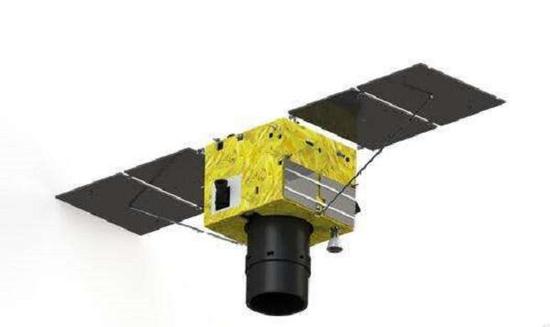 Gaojing No. 1 broke the monopoly of foreign high-resolution satellite images in China
Gaojing No. 1 broke the monopoly of foreign high-resolution satellite images in China
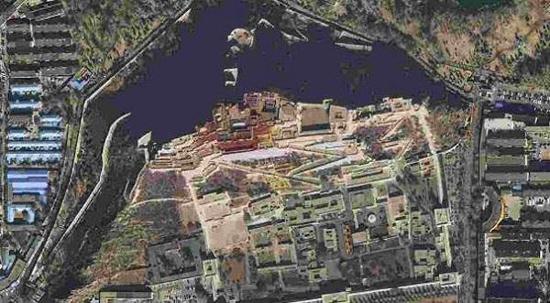 High resolution satellite image taken by Gaojing No.1
High resolution satellite image taken by Gaojing No.1
In the new century, Chinese related units listed high-resolution optical reconnaissance satellites as the development focus. After efforts, they first broke through 1.5 and 2 m diameter optical lenses, and successfully developed a new generation of optical reconnaissance satellites and remote sensing satellites, thereby improving satellite resolution to Below 1 meter, according to overseas data, the resolution of the domestically produced Gaojing No. 1 remote sensing satellite reached 0.5 meters in 2016, indicating that China has mastered the high-resolution optical remote sensing satellite technology, and the high-view 1 remote sensing satellite launched, breaking the foreign high. The monopoly of precision satellite images in the domestic market also marks that domestic optical reconnaissance and remote sensing satellites have entered the international advanced ranks. On this basis, Chinese related units have moved to a higher level. Not long ago, China launched high-scoring 11th optical. Remote sensing satellites, according to the British Jane's Defense Weekly, its resolution has reached the level of KH-12, which is 0.1 meters. From this indicator, it should use larger diameter lenses to improve satellite resolution. . This shows that domestic optical reconnaissance satellites and remote sensing satellites have already tied the most advanced reconnaissance satellites in the United States, which can provide more detailed ground target information, and can more fully grasp the relevant regional situation, and provide a more reliable basis for correctly speculating the deployment and intention of the other party.
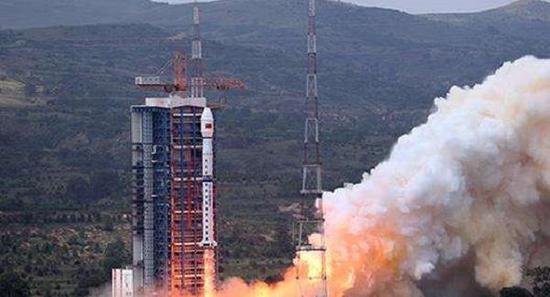 Jane's Defense Weekly believes that the domestic high score 11 resolution is comparable to the KH12.
Jane's Defense Weekly believes that the domestic high score 11 resolution is comparable to the KH12.
However, the relevant Chinese units did not stop there, and they also developed larger-diameter optical lenses, which laid a solid foundation for further improvement of the performance of domestic optical reconnaissance satellites. It can detect ground targets in higher orbits, or in the same orbit. With higher resolution, the performance of domestic optical reconnaissance satellites will take another big step forward. (Author's signature: Xiaofei pig's defense observation room)
中国制造最大光学镜片 可让侦察卫星分辨率超美锁眼
中国制造最大光学镜片 可让侦察卫星分辨率超美锁眼
0
 中国制造出当今最大光学镜片
中国制造出当今最大光学镜片
8月21日,长春光机所完成了直径为4米的高精度碳化硅非球面反射镜,是目前世界上口径最大的单体碳化硅反射镜。它标志着我国光学系统先进制造能力达到了国际先进水平。
许多人可能不明白这个镜子的意义,笔者举一个例子,美国最先进的光学侦察卫星KH-12,号称分辨率可以达到0.1米,它的镜片大约在3米左右,也就是说国产光学镜片直径已经超过KH-12侦察卫星,从而为国产光学侦察卫星分辨弦超过KH-12打下了坚实的基础。
 美国最先进的KH-12侦察卫星光学镜片直径也只有3米
美国最先进的KH-12侦察卫星光学镜片直径也只有3米
众所周知,光学分辨率遵循瑞利定理,它与波长呈现正比,而与镜片直径呈现反比,也就是波长越短,分辨率越高,相应镜片直径越大,分辨率也越高,对于光学侦察卫星来说,都工作在可见光波段,因此波长差不多,这样决定分辨率就是镜片直径,前面说过KH-12成为当今分辨率最高的光学侦察卫星,凭借就是那个直径达到3米的镜片。
光学镜片直径越大,质量会随之提高,制造难度也就越大,这是因为镜面微小的突起或者裂纹都会影响镜片的透光性能,进而降低卫星分辨率,从现在来看大直径光学镜片制造只少数厂商能够掌握,基本上都被发达国家垄断,这个领域对国内也是严格禁运,早期受到国内经济技术水平影响,国产光学镜片制造水平受到限制,光学镜片直径未能突破1米,这样就限制国产光学侦察卫星分辨率,一直在低于1米,这个指标与国外先进光学侦察卫星差距明显,从而是造成国内在高分辨率卫星图片方面受制于人。
 高景1号打破了国外高分辨卫星图片在国内的垄断
高景1号打破了国外高分辨卫星图片在国内的垄断
 高景1号拍摄的高分辨率卫星图片
高景1号拍摄的高分辨率卫星图片
进入新世纪,中国相关单位将高分辨率光学侦察卫星列为发展重点,经过努力首先突破了1.5和2米直径光学镜片,研制成功新一代光学侦察卫星和遥感卫星,从而将卫星分辨率提高到1米以下,根据海外资料,2016年发射国产高景1号遥感卫星分辨率达到了0.5米,表明中国已经掌握了高分辨光学遥感卫星技术,高景1号遥感卫星发射,打破了国外在高精度卫星图片在国内市场的垄断,也标志着国产光学侦察、遥感卫星已经迈入国际先进行列,在此基础上,中国相关单位又向更高水平迈进,前不久中国又发射高分11号光学遥感卫星,根据英国简氏防务周刊的消息,它的分辨率已经达到KH-12的水平,也就是0.1米,从这个指标来看,它应该采用了更大直径的镜片,以提高卫星分辨率。这表明国产光学侦察卫星、遥感卫星已经追平美国最先进侦察卫星,可以提供更加详细地面目标信息,能够更加全面掌握相关地区态势,为正确推测对方布署、意图提供更加可靠的依据。
 简氏防务周刊认为国产高分11分辨率已经可以与KH12相媲美
简氏防务周刊认为国产高分11分辨率已经可以与KH12相媲美
不过中国相关单位并没有就此止步,还研制了更大直径光学镜片,这样就为国产光学侦察卫星性能进一步提高打下了坚实的基础,它能够在更高的轨道上探测地面目标,或者在相同轨道下获得更高的分辨率,未来国产光学侦察卫星性能将会向前再迈进一大步。(作者署名:小飞猪的防务观察室)
The largest optical lens made in China can make the reconnaissance satellite resolution super-keyhole
Sina Military at 09:59 on August 25, 2018
0

On August 21, Changchun Institute of Optics and Fine Mechanics completed a high-precision silicon carbide aspheric mirror with a diameter of 4 meters. It is the largest single-crystal silicon carbide mirror in the world. It marks that the advanced manufacturing capability of China's optical system has reached the international advanced level.
Many people may not understand the meaning of this mirror. The author gives an example. The most advanced optical reconnaissance satellite in the United States, KH-12, claims to have a resolution of 0.1 meters. Its lens is about 3 meters, which means the diameter of domestic optical lenses. It has surpassed the KH-12 reconnaissance satellite, thus laying a solid foundation for the domestic optical reconnaissance satellite to resolve strings beyond KH-12.

As we all know, the optical resolution follows the Rayleigh theorem, which is proportional to the wavelength and inversely proportional to the diameter of the lens, that is, the shorter the wavelength, the higher the resolution, the larger the diameter of the corresponding lens, and the higher the resolution, for the optical reconnaissance satellite. In fact, they all work in the visible light range, so the wavelength is similar, so the resolution is the lens diameter. As mentioned above, the KH-12 has become the highest resolution optical reconnaissance satellite, with the lens up to 3 meters in diameter.
The larger the diameter of the optical lens, the higher the quality and the more difficult it is to manufacture. This is because the tiny protrusions or cracks on the mirror will affect the light transmission performance of the lens, which will reduce the satellite resolution. From now on, the large diameter optical lens Only a few manufacturers can master it, and it is basically monopolized by developed countries. This field is also strictly embargoed on the domestic market. It was affected by the domestic economic and technological level in the early stage. The manufacturing level of domestic optical lenses was limited, and the diameter of optical lenses failed to exceed 1 meter. In terms of limiting the resolution of domestic optical reconnaissance satellites, it has been below 1 m. This indicator is significantly different from foreign advanced optical reconnaissance satellites, which is causing domestic restrictions on high-resolution satellite images.


In the new century, Chinese related units listed high-resolution optical reconnaissance satellites as the development focus. After efforts, they first broke through 1.5 and 2 m diameter optical lenses, and successfully developed a new generation of optical reconnaissance satellites and remote sensing satellites, thereby improving satellite resolution to Below 1 meter, according to overseas data, the resolution of the domestically produced Gaojing No. 1 remote sensing satellite reached 0.5 meters in 2016, indicating that China has mastered the high-resolution optical remote sensing satellite technology, and the high-view 1 remote sensing satellite launched, breaking the foreign high. The monopoly of precision satellite images in the domestic market also marks that domestic optical reconnaissance and remote sensing satellites have entered the international advanced ranks. On this basis, Chinese related units have moved to a higher level. Not long ago, China launched high-scoring 11th optical. Remote sensing satellites, according to the British Jane's Defense Weekly, its resolution has reached the level of KH-12, which is 0.1 meters. From this indicator, it should use larger diameter lenses to improve satellite resolution. . This shows that domestic optical reconnaissance satellites and remote sensing satellites have already tied the most advanced reconnaissance satellites in the United States, which can provide more detailed ground target information, and can more fully grasp the relevant regional situation, and provide a more reliable basis for correctly speculating the deployment and intention of the other party.

However, the relevant Chinese units did not stop there, and they also developed larger-diameter optical lenses, which laid a solid foundation for further improvement of the performance of domestic optical reconnaissance satellites. It can detect ground targets in higher orbits, or in the same orbit. With higher resolution, the performance of domestic optical reconnaissance satellites will take another big step forward. (Author's signature: Xiaofei pig's defense observation room)
中国制造最大光学镜片 可让侦察卫星分辨率超美锁眼
中国制造最大光学镜片 可让侦察卫星分辨率超美锁眼
0

8月21日,长春光机所完成了直径为4米的高精度碳化硅非球面反射镜,是目前世界上口径最大的单体碳化硅反射镜。它标志着我国光学系统先进制造能力达到了国际先进水平。
许多人可能不明白这个镜子的意义,笔者举一个例子,美国最先进的光学侦察卫星KH-12,号称分辨率可以达到0.1米,它的镜片大约在3米左右,也就是说国产光学镜片直径已经超过KH-12侦察卫星,从而为国产光学侦察卫星分辨弦超过KH-12打下了坚实的基础。

众所周知,光学分辨率遵循瑞利定理,它与波长呈现正比,而与镜片直径呈现反比,也就是波长越短,分辨率越高,相应镜片直径越大,分辨率也越高,对于光学侦察卫星来说,都工作在可见光波段,因此波长差不多,这样决定分辨率就是镜片直径,前面说过KH-12成为当今分辨率最高的光学侦察卫星,凭借就是那个直径达到3米的镜片。
光学镜片直径越大,质量会随之提高,制造难度也就越大,这是因为镜面微小的突起或者裂纹都会影响镜片的透光性能,进而降低卫星分辨率,从现在来看大直径光学镜片制造只少数厂商能够掌握,基本上都被发达国家垄断,这个领域对国内也是严格禁运,早期受到国内经济技术水平影响,国产光学镜片制造水平受到限制,光学镜片直径未能突破1米,这样就限制国产光学侦察卫星分辨率,一直在低于1米,这个指标与国外先进光学侦察卫星差距明显,从而是造成国内在高分辨率卫星图片方面受制于人。


进入新世纪,中国相关单位将高分辨率光学侦察卫星列为发展重点,经过努力首先突破了1.5和2米直径光学镜片,研制成功新一代光学侦察卫星和遥感卫星,从而将卫星分辨率提高到1米以下,根据海外资料,2016年发射国产高景1号遥感卫星分辨率达到了0.5米,表明中国已经掌握了高分辨光学遥感卫星技术,高景1号遥感卫星发射,打破了国外在高精度卫星图片在国内市场的垄断,也标志着国产光学侦察、遥感卫星已经迈入国际先进行列,在此基础上,中国相关单位又向更高水平迈进,前不久中国又发射高分11号光学遥感卫星,根据英国简氏防务周刊的消息,它的分辨率已经达到KH-12的水平,也就是0.1米,从这个指标来看,它应该采用了更大直径的镜片,以提高卫星分辨率。这表明国产光学侦察卫星、遥感卫星已经追平美国最先进侦察卫星,可以提供更加详细地面目标信息,能够更加全面掌握相关地区态势,为正确推测对方布署、意图提供更加可靠的依据。

不过中国相关单位并没有就此止步,还研制了更大直径光学镜片,这样就为国产光学侦察卫星性能进一步提高打下了坚实的基础,它能够在更高的轨道上探测地面目标,或者在相同轨道下获得更高的分辨率,未来国产光学侦察卫星性能将会向前再迈进一大步。(作者署名:小飞猪的防务观察室)







